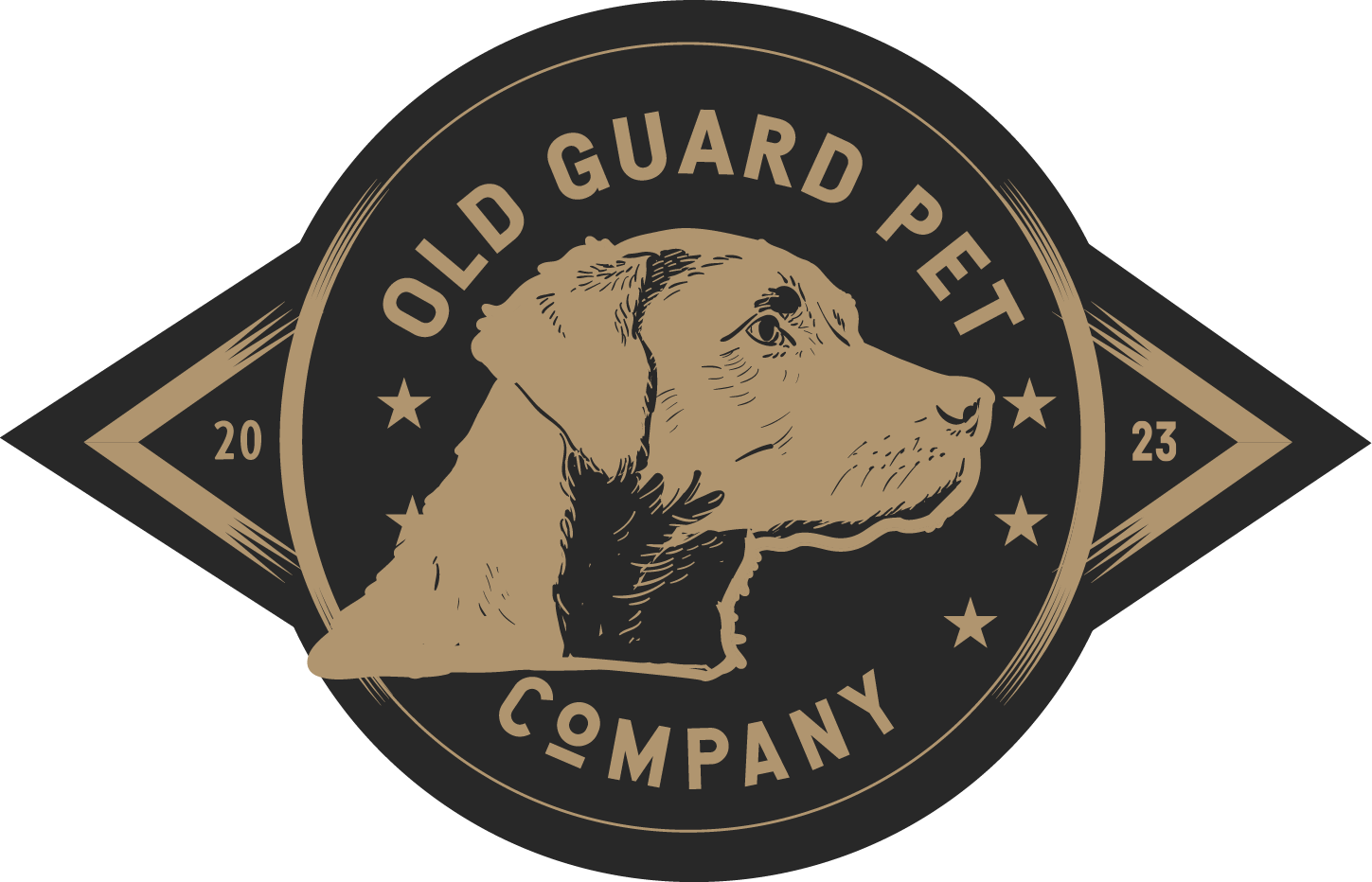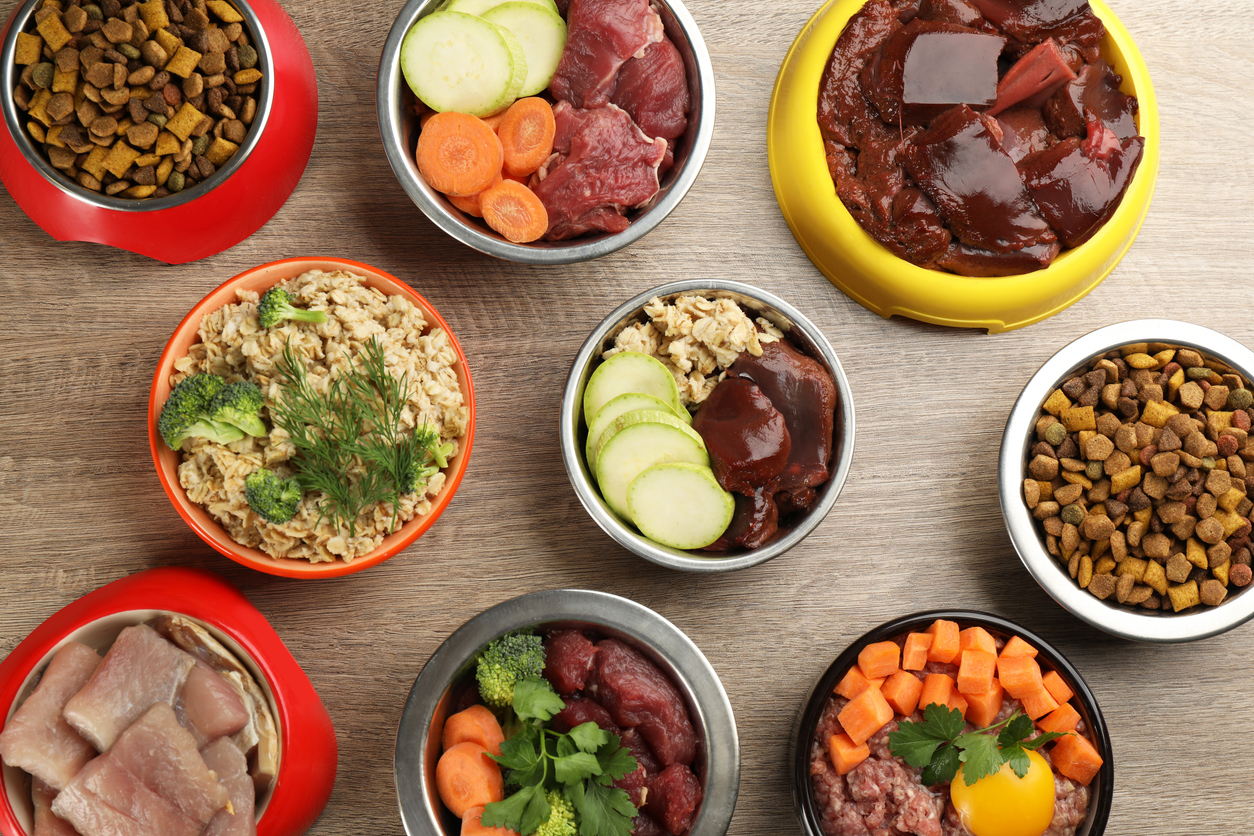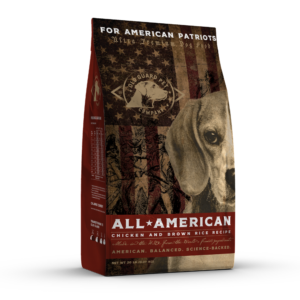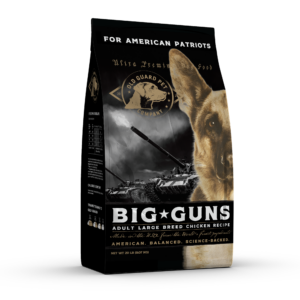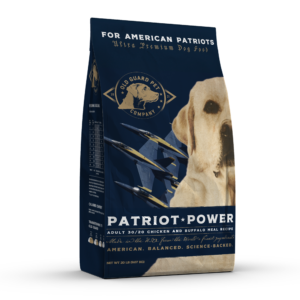Part of a previous role I had was conducting consumer interviews. Often these interviews were held in the homes of dog owners, and I had the pleasure of learning more about their dogs, their daily feeding regime and the key behaviors they look for in their dogs’ response to food. I truly love having the opportunity to see the unique bond between owners and their dogs. While I learned a lot about pet ownership in general, one of the most surprising things I learned was how many owners add additional ingredients or “dog food toppers” to their dogs’ kibble. This is an insight that the pet food industry capitalized on with the recent and rapid growth of options available for meal toppers, functional supplements, broths etc. The market for these additions grew by 22% in 2023 and is projected to exceed $2 Billion in sales. That’s “B” for Billion!
So, why do owners add home cooked food or commercial dog food toppers/supplements to their dogs’ food? Well, most want to offer variety to their dog in taste or believe that the dogs’ food is more balanced and complete with these additions. But, are you actually doing harm? If you want to supplement your dogs’ food, there are certain and very important things to consider. While owners might have the best of intentions, supplementation can negatively impact nutritional balances.
In this blog, we will help you know more about the types of supplements in the market, common at-home solutions and what to consider when supplementing or “topping” your dogs’ main food.
What do we mean by a supplement vs. dog food topper?
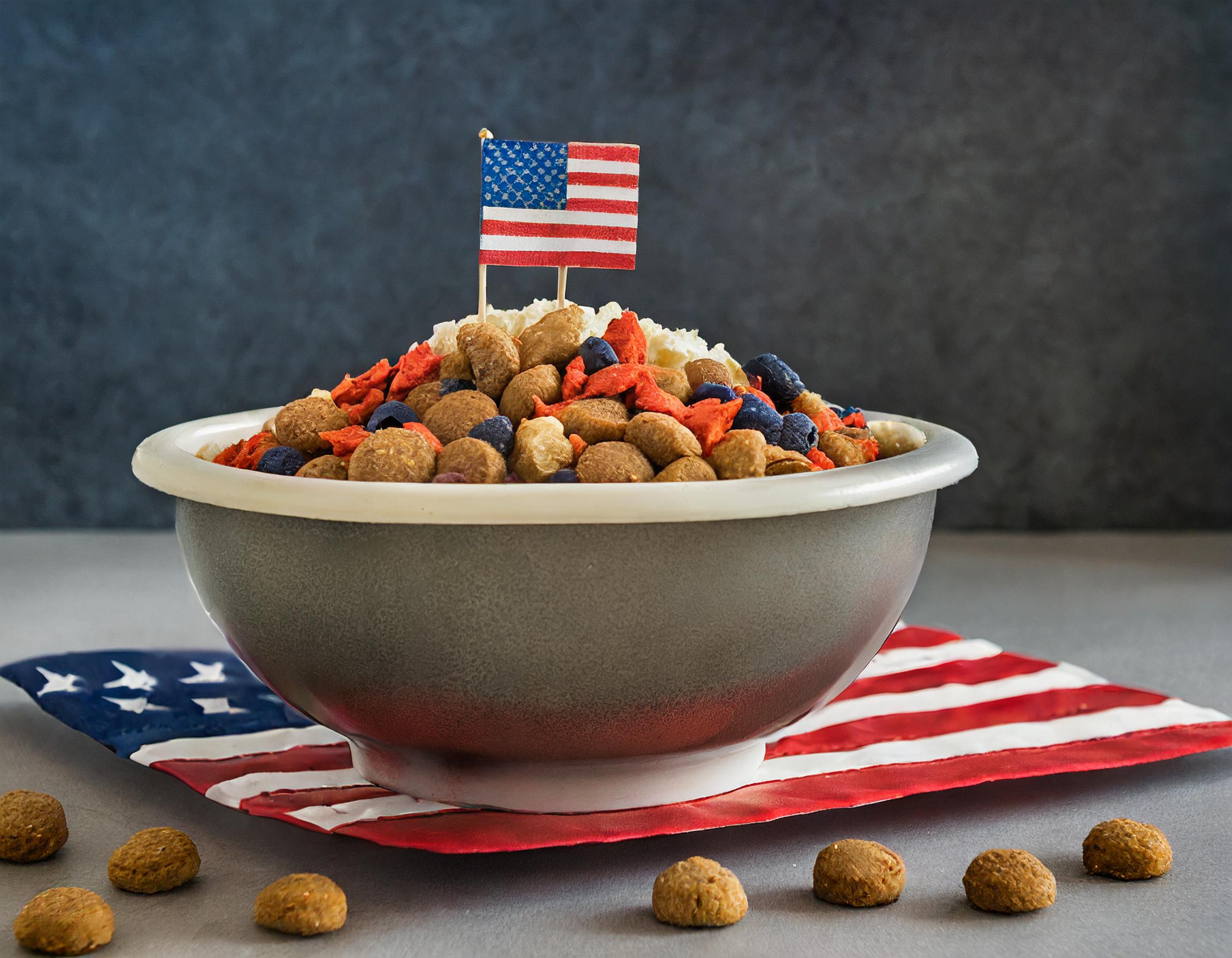
A supplement is more of a functional addition. Generally, it is added to food for a very specific health benefit that is supported by some (hopefully) level of research. Sadly, this isn’t always the case but, that is another blog topic. A dog food topper is added more for taste or variety and for the purpose of this blog we will say they can be homemade, or store bought (commercially made).
The most common types of supplements are used for the following health benefits: skin and coat, immune, heart health, calming, mobility and general health (multivitamin). Pet owners also purchase supplements for digestive health; however, this is one health area that they rely on primary food to resolve more than supplements. Alternatively, joint health is believed by pet owners to be better solved with supplements over food while the other health benefits are essentially weighted the same between supplements and food in consumer beliefs. The most common dog food toppers are homemade meats, fruits or veggies or commercially prepared “fresh” or raw toppers, broths or oils.
The Benefits of Certain Supplements and Dog Food Toppers
1. Functional health benefits that can’t be given in a complete recipe form
There are some supplements that are better in toppers or treat form than in kibble or main food. Why? Well, let’s look at some types of probiotics. Since some probiotics don’t survive heat, high water levels or air exposure, this creates a problem as they cannot be added to commercial pet food of any kind and only added at time of feeding (or given as a treat). Because of this, more sensitive probiotics are best in blister packages, in recipes with no or little heat treatment and/or in recipes with little to no water included. Keep in mind that even commercial raw recipes can go through a High-Pressure Processing or have higher water content which would kill off these probiotics.
2. Regulatory approval limits the ingredients used in kibble or complete recipes
Certain ingredients added to pet foods that have been fed safely to dogs for a long time may not be formally “approved” ingredients. A common example is purified glucosamine hydrochloride and chondroitin sulfate (not natural sources). In recent years, some complete and balanced recipes have started to include these ingredients in kibble though “not approved” ingredients (through the formal processes). Historically, and still today, this approval process for complete and balanced food sources has created an opening for some supplements since the approval process is different than for main food. This can be both positive and negative. Supplements can provide a safe venue for ingredients or nutrients not approved for use in main food recipes to be given to dogs. However, if you see magical claims on certain supplements, ask the manufacturer what evidence they have for those claims and whether any research has been performed to demonstrate those claims in dogs.
3. There is “no known harm” in supplementing a particular nutrient
Supplementing diets with Taurine has become popular lately. So long as minimum protein levels are met (and available to the dog for metabolism) taurine is not an essential nutrient for dogs since they make it naturally from two essential amino acids called methionine and cystine. Traditional animal proteins used in pet foods are often rich in these amino acids, but vegetable proteins can be limiting. Also, some novel proteins can be limiting in certain amino acids or the amino acid profile and availability unknown overall. Lastly, overcooking, and poor digestibility can also impact the availability of the amino acids in the whole protein. Taurine has been shown to be safe at high levels. So, it is sort of a “do no harm” supplement and for certain breeds like Golden Retrievers and Newfoundland’s with greater potential for genetic issues with taurine availability may benefit with supplementation. However, the best approach, if possible, is a whole diet that is rich in available amino acids and other nutrients essential for all critical metabolic functions. Also, always seek the advice of a veterinarian when supplementing because while high levels may be well tolerated there can still be unknown risks to consider.
The Risks of Certain Supplements and Dog Food Toppers
When I see videos of pet owners creating these mealtime feasts for their dogs on these fancy feeding mats I feel both sad (knowing they are genuinely motivated to do the best for their beloved dog) and worried that the dog could be receiving an imbalanced diet. It is shocking to me that these types of videos end up on pet food company websites and social media pages. My hypothesis is that these companies are feeding into the “humanization” trend around dogs, and they can upsell their line of supplements and toppers (generally cheaper to make than food, easier to ship/distribute and have great margins). However, it might not be good for all dogs. And, if you haven’t guessed by now, I am an advocate for respecting the dog’s nature and we should feed them for their unique dog health needs not ours. As a sidenote, these fancy feeding mats that are becoming popular have recently been tested as an “enrichment” tool during feeding times by a group of researchers and they found that if dogs are given a choice, they would rather eat their food out of a regular feeding tray. This is different if you actually need to slow your dogs eating vs. use the tray for enrichment.
When I see videos of pet owners creating these mealtime feasts for their dogs on these fancy feeding mats I feel both sad (knowing they are genuinely motivated to do the best for their beloved dog) and worried that the dog could be receiving an imbalanced diet.
So, back to dog food toppers, you might ask, what’s the big deal if I add some chicken to my dog’s bowl? My answer will be, well, it depends on how much. Let’s look at an example from the book Canine and Feline Nutrition: A Resource for Companion Animal Professionals– they looked at the addition of beef to dry food. As soon as dogs were fed up to 25% of the diet as beef there were notable shifts in the nutrient composition of the food and as soon as 50% beef to 50% kibble to 75% beef to 25% kibble there were deficiencies in essential nutrients (based on AAFCO guidelines) like Calcium, Phosphorus, Iron, Vitamin D and E.
What about adding liver or organ meat? That is great right? Well, liver is severely deficient in Calcium and very high in Vitamin A and both nutrients are critical to bone development. Excess Vitamin A can be toxic after years of consumption and with too little Calcium bones won’t grow properly. Also, beef liver can be high in copper.
What about some cheese? Dairy is a leading allergen in dogs and too much can cause an upset stomach.
Fish oil is fine right? Fish oil is a great source of essential and non-essential nutrients like vitamin D, E and omega 3 fatty acids; however, in excess, these vitamins can build up in the liver and cause issues. Also, high quality pet foods are starting to leverage more oils to improve omega 3 levels and ratios vs omega 6 fatty acids. These are often already balanced in recipes so shifting that balance can impact this ideal ratio and can have negative consequences on normal inflammatory responses. However, if the food your feeding is low in Omega 3 fatty acids the addition could be helpful.
Overall Calorie Intake
Not only can adding dog food toppers or supplements impact individual nutrient balance, one of the big issues is the impact on daily calorie intake. Overfeeding is a very common problem amongst pet owners with most pets being obese or overweight. As the supplement and topper trend continues, overfeeding with potential malnutrition can be even more of a problem for dogs. What do I mean by overfeeding with malnutrition? Essentially, your dog is getting the right amount (or more) of calories each day but for each calorie consumed the nutrients are not in balance. Have you heard of the statement that a calorie is not always equal to a calorie? Often, when a dog becomes overweight the first response is to cut back on the main food or kibble. This can lead to deficiencies (if you are cutting back more than 10% of the food, consider going on a lower fat or weight control recipe). But the problem is exasperated if you cut back the kibble and still add dog food toppers since you are cutting back calories that are balanced and nutrient dense. Malnutrition and overfeeding will both impact the longevity and quality of life of your dog.
A few key takeaways on Dog Toppers

The last couple points- look at the entire ingredient list on the supplements and toppers. Often these will include ingredients most pet owners wouldn’t want in their dogs’ main foods. Also, look at who owns, makes and where the supplements and toppers are sourced. More treats will come from international manufacturers than main foods. This isn’t necessarily bad, just a point to consider. Also, the largest supplement brand in the US is owned by a Chinese company. So, if you want to support companies here in America, look at who makes and owns the toppers and supplements.
If you want to treat your dog but also want to make sure you are topping and supplementing your dog’s food responsibly, make sure your additions don’t exceed 5-10% of the total calorie intake each day. Make sure your dog is still eating a high-quality premium balanced food. If you must add toppers to get your dog to eat, that is OK, but make sure they are eating the kibble or main food and not just picking around. Also, don’t immediately go to food or supplements to solve certain issues- skin and coat problems are largely driven by environment, not food. Have a dog with lots of anxiety? Try to increase exercise or behavioral enrichments. If you have a specific concern or know you have a dog with a unique health need, possibly diagnosed by a vet or with a known genetic condition, then follow the supplementation guidelines provided by your veterinarian and share the food you are currently feeding your dog with your vet to make sure this is taken into consideration.
At Old Guard Pet Company, we wanted to make recipes that were nutrient rich and balanced. This is more than just being complete and balanced, we went beyond. Looking at the key health solutions pet owners were seeking in supplements and toppers and including solutions in our foods. If we ever launch supplements or functional health toppers, they will be to provide a health solution that can’t be fulfilled in our recipes. Our unique slow cooking method combined with our high-quality ingredients ensures that the nutrient integrity is maintained during cooking. We test our recipes to ensure they are delivering the nutrients we guarantee. Don’t make your pets health a guessing game, trust Old Guard Pet Company.
References:
Domestic pet dogs (Canis lupus familiaris) do not show a preference to contrafreeload, but are willing | Scientific Reports (nature.com)
Case, L. P., Daristotle, L., Hayek, M. G., & Raasch, M. F. (1997). Canine and feline nutrition: a resource for companion animal professionals.
Five Dog Food Nutrition Secrets From a PhD
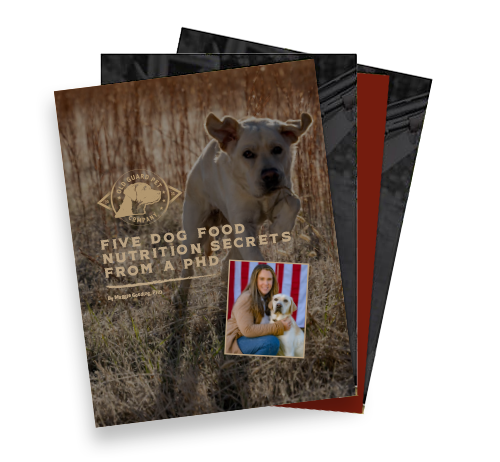
With so much information floating around out there on dog nutrition, how can you be sure you have the facts? In this guide, Founder Maggie Gooding, PhD, in Animal Nutrition and Behavior, with over a decade experience in R&D working on some of the largest pet food brands share five nutrition secrets to help your dog live a longer healthier life.
Get the inside scoop on:
- Nutrients
- Energy Balance
- Weight Control
- Dog Eating Habits
- Fibers and Fillers
Download by filling the form out below:
